
1st grade science key vocabulary English/Spanish translations (space to add drawing as well).
- Material Type:
- Lesson Plan
- Date Added:
- 06/01/2012

1st grade science key vocabulary English/Spanish translations (space to add drawing as well).
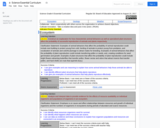
6th Grade Regular Science Scope & Sequence
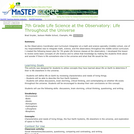
This classroom activity will show students that there is a lot we don't know about science, for example life throughout the universe. It will hopefully encourage students to question what we know and don't know, and exploration and study of the unknown.
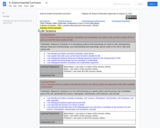
8th Grade Regular Science Scope & Sequence

For students interested in studying biomechanical engineering, especially in the field of surgery, this lesson serves as an anatomy and physiology primer of the abdominopelvic cavity. Students are introduced to the abdominopelvic cavity—a region of the body that is the focus of laparoscopic surgery—as well as the benefits and drawbacks of laparoscopic surgery. Understanding the abdominopelvic environment and laparoscopic surgery is critical for biomechanical engineers who design laparoscopic surgical tools.
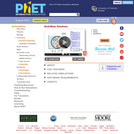
How do strong and weak acids differ? Use lab tools on your computer to find out! Dip the paper or the probe into solution to measure the pH, or put in the electrodes to measure the conductivity. Then see how concentration and strength affect pH. Can a weak acid solution have the same pH as a strong acid solution?
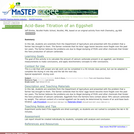
This activity is acid-base titration lab where students determine the percent of calcium carbonate in an eggshell.
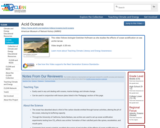
This video follows biologist Gretchen Hofmann as she studies the effects of ocean acidification on sea urchin larvae.

An alternative introduction to the chapter "Adapting and Living Together" - explained with Vamipres! It sits within the Ecology and Environment topic of the virtual school GCSE Biology. Teachers can choose which engagement video is better for their own uses and students.
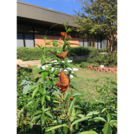
Students will use knowledge of adaptations to compare the structures and functions of plants. These likenesses are passed down between parent plants and their offspring
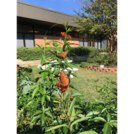
STUDENT ACTIVITY – 4th -- TXThis is a distance-learning lesson students can complete at home.Students will use knowledge of adaptations to compare the structures and functions of plants. These likenesses are passed down between parent plants and their offspring.This activity was created by Out Teach (out-teach.org), a nonprofit providing outdoor experiential learning to transform Science education for students in under-served communities. .
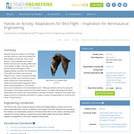
This activity first asks the students to study the patterns of bird flight and understand that four main forces affect the flight abilities of a bird. They will study the shape, feather structure, and resulting differences in the pattern of flight. They will then look at several articles that feature newly designed planes and the birds that they are modeled after. The final component of this activity is to watch the Nature documentary, "Raptor Force" which chronicles the flight patterns of birds, how researchers study these animals, and what interests our military and aeronautical engineers about these natural adaptations. This activity serves as an extension to the biomimetics lesson. Although students will not be using this information in the design process for their desert resort, it provides interesting information pertaining to the current use of biomimetics in the field of aviation. Students may extend their design process by using this information to create a means of transportation to and from the resort if they chose to.
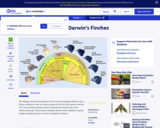
Finches on the Galapagos Islands have evolved to exploit almost every possible niche. This diagram shows the range of food sources available on the island and the different beak shapes adapted to exploit each of them.

Spreadsheets across the Curriculum Module. Students build a spreadsheet to calculate proper medicine dosages using the metric system.
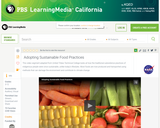
Hear about how respect for Earth can help us attain a more sustainable lifestyle in the face of climate change in this video segment adapted from United Tribes Technical College.
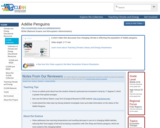
A short video that discusses how changing climate is affecting the population of AdÃlie penguins.
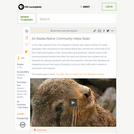
This video from First Alaskans Institute spotlights the Alaska Native community of St. Paul and its hands-on commitment to care for the land and animals on which it depends.

In this video adapted from KUAC-TV and the Geophysical Institute at the University of Alaska, Fairbanks, Alaska Native students contribute to research on how their environment is changing as a result of global warming.
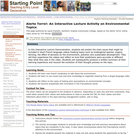
In this Interactive Lecture Demonstration, students will predict the main issues that might be included in short French language videos treating topics such as endangered species, organic farming, the effect of aerosols on the environment, pollution and sustainable development. They will then view short videos on the topics and reflect on how their prior assumptions meshed with reality.
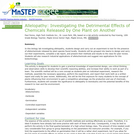
In this inquiry activity students work in groups to investigate allelopathy via research, using the scientific method to plan and carry out an experiment, and creating a formal written report and oral presentation.